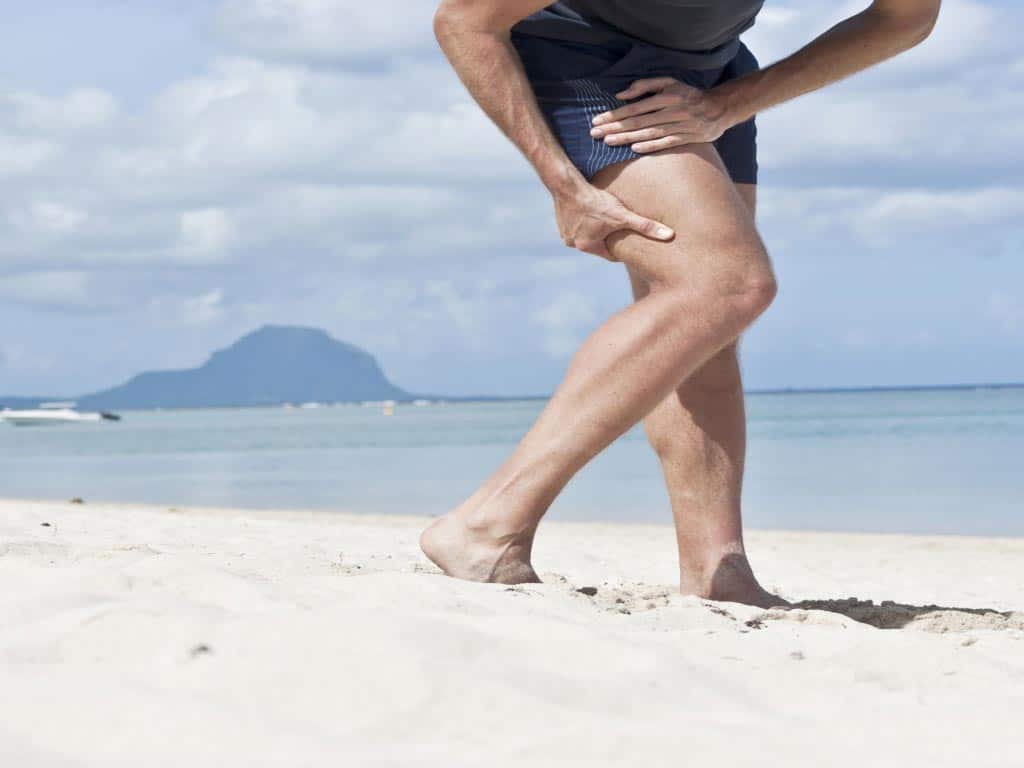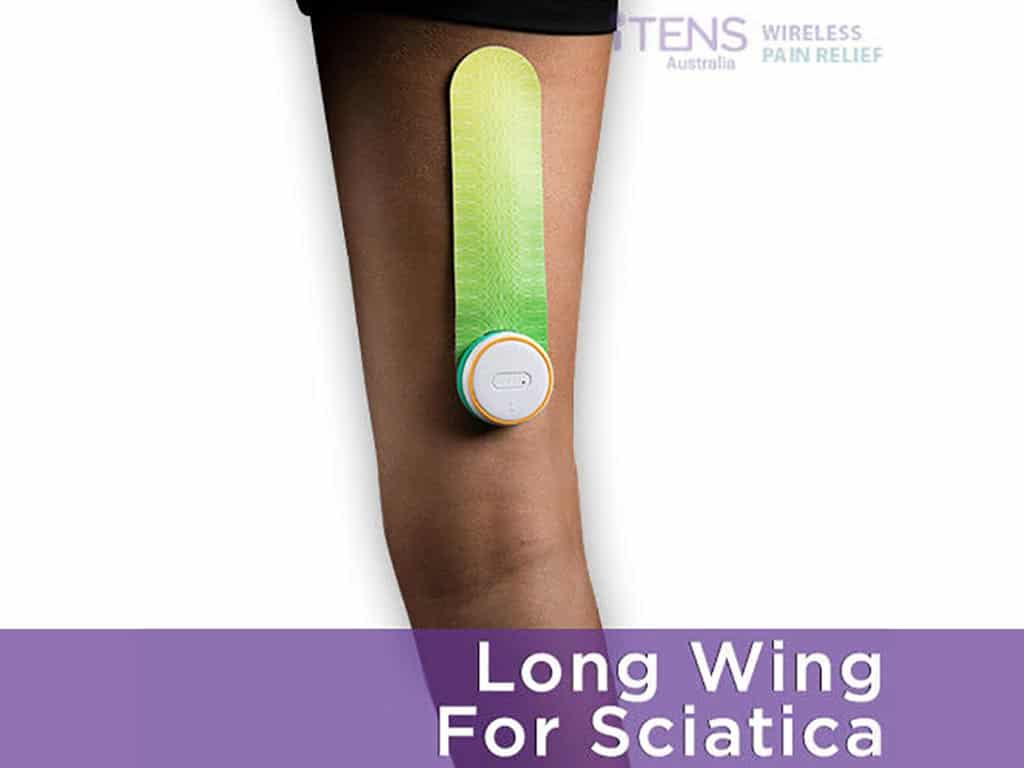
Sciatica is a condition characterised by aches that radiate along the sciatic nerve. This nerve runs along the lower back and down each leg. To ease the aches from this condition, many turn to traditional methods, such as pain medicines and physical therapy. Transcutaneous Electrical Nerve Stimulation (TENS) is another option. TENS treatment for sciatica involves using electrical stimulation to trigger endorphin production and the pain gate mechanism to alleviate pain. It is an effective and drug-free method.
Sciatic pain leads to muscle weakness and numbness in the affected area. This can limit mobility and lower the quality of life. Fortunately, people can use TENS machines for quick relief. To use TENS, they must place the electrode pads on muscles near the pain source. Afterwards, they may adjust the settings to their comfort levels. This article will present what TENS therapy for sciatica is, how it relieves pain, and how to operate it.
What is a TENS Treatment for Sciatica?
Sciatica is caused by injury or pressure to the sciatic nerve. A common symptom of this condition is aches, weakness, and numbness in the lower back, buttocks, and leg. It can occur on either side of the body. A TENS treatment for sciatica uses low-voltage electrical pulses to stimulate the body to alleviate the aches.
TENS treatment involves the use of TENS machines. These are battery-powered units often seen in hospitals and physical therapy clinics. This is because TENS is complementary to many other treatments. People may also buy TENS machines for sciatica pain relief at home. Many units are available online and in pharmacies. People may purchase them without prescriptions, but it is recommended to consult a doctor for advice before using one.
Generally, there are two types of TENS devices. These are the wired and wireless TENS. Wired or handheld units use lead cables to connect the electrode pads to the controller. Meanwhile, wireless TENS remove the restrictions of cords using Bluetooth technology. They are convenient and portable devices.
Causes and Symptoms of Sciatica Pain
These are some causes of sciatica pain:
- Herniated discs: occur when a disc gets forced through a weakened part of the spine. It can happen in any part of the spine but is more common in the lower back.
- Spinal stenosis: the narrowing of the spinal canal, which puts pressure on the nerves.
- Osteoarthritis: a degenerative ailment commonly seen in elderly people.
Here are some symptoms seen in patients with sciatica:
- Aches going down the lower back, buttocks, and leg of the affected side.
- Paresthesia or tingling sensations.
- Difficulty or weakness when bending forward or backward.
- Numbness or loss of sensation in the affected areas.

How a TENS Treatment for Sciatica Helps to Relieve Pain
A TENS treatment for sciatica works by triggering the body processes that relieve pain. People can adjust the intensity, frequency, and pulse-width settings of a TENS machine. It is what makes the treatment versatile and applicable to many conditions. Moreover, it allows the user to customise their treatment according to their tolerance of electrical currents.
Using high-frequency stimulation (50-120 Hz) triggers the spinal nerve cells to block the transmission of pain signals to the brain. This is the mechanism suggested in the Gate Control Theory of Pain. It works quickly, making it suitable for acute pain conditions. This setting also has a massage-like effect. It increases blood flow and relaxes muscle tension.
On the other hand, low-frequency stimulation (2-10 Hz) triggers the production of endorphins. These are natural pain relievers that build up and reduce the overall pain. It also relieves stress, improves moods, and reduces inflammation. Many use it for chronic pain conditions because its effects last hours after the session. Overall, TENS can help with sciatic nerve pain using these two methods.
Benefits of Using the Unit
There are many benefits to using TENS as a pain management method. It is drug-free, so there is no risk of addiction. It also does not have the adverse effects that pain medicine has. Furthermore, it is non-invasive. This means there is no risk of infections and complications associated with invasive procedures like surgery.
Moreover, TENS units are portable. People may use them in various locations for convenient pain relief. They are also cost-effective. Many pads are reusable up to 20 times. Some also have rechargeable batteries for on-the-go treatment sessions. Lastly, people may use TENS about four times daily.

How to Apply a TENS Treatment for Sciatica
Using TENS treatment for sciatica is a straightforward process. It can be self-administered and does not require medical supervision. However, reading the instruction guide of the device manufacturer is recommended. Before starting, the user can clean the area with soap and water. This removes excess body oils, lotion, and dirt that may hinder the application of the pads.
Afterwards, the user may place the electrodes on the area they wish to focus on. When the pads are secure, they may start the treatment by turning the machine on. Start on low settings to avoid discomfort or shocks. Then, gradually increase the settings or select a pre-set mode. The user may set a timer to avoid exceeding the prescribed time limit.
Sessions typically last between 20 and 30 minutes. However, this depends on the settings used. The user must stay alert throughout the treatment and watch for possible adverse effects like skin irritation or muscle twitching. If those occur, then they may need to lower the intensity. Once the time elapses, they may turn off the machine. Afterwards, they can remove the pads.
Pad Placement for Effective Relief
Proper electrode placement is crucial for effective pain relief. For sciatica pain, the user may attach the electrodes on the lower back while carefully avoiding the spine. If the aches radiate down to the leg, they may also place electrodes there. Users may consult a pad placement chart or guide for other conditions.
It is crucial to place the adhesives on muscles near or on the pain source. In addition, there must be at least a one-inch distance between them to prevent interference. However, avoid areas with irritated, infected, and broken skin. This is because the electrical stimulation may cause the skin condition to worsen.
Conclusion
TENS treatment for sciatica may benefit many people relying on pain medicines. It is a non-invasive form of electrotherapy that provides quick and temporary pain relief. Using high and low frequencies can trigger spinal nerve cells to block pain signals and endorphin production, respectively. It is effective not only on sciatica but also on many other conditions, like scoliosis and migraines. Furthermore, using TENS is a straightforward process people can easily do at home.
By applying electrodes and adjusting settings, people can achieve convenient relief. Moreover, TENS machines are available online and in pharmacies for home use. People may buy wired or wireless TENS without prescriptions. However, consulting a qualified health professional is ideal before using TENS. They can diagnose the condition and assess if TENS suits the individual. Those looking for wireless TENS options can consider the iTENS from iTENS Australia.







